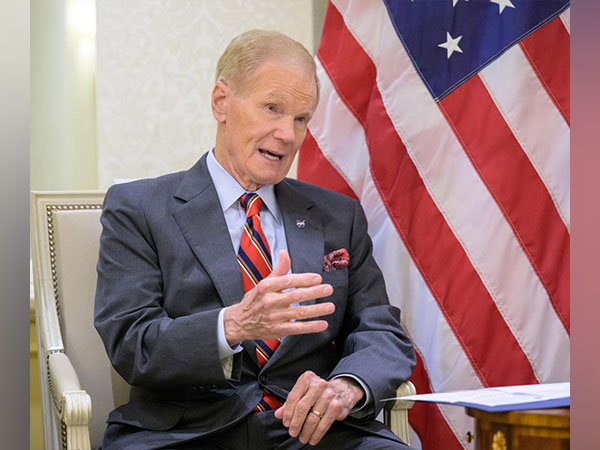Washington DC [India], June 20 (ANI): Stating India and the United States are expanding their space collaboration, NASA administrator Bill Nelson said that the US space agency is also working to further the initiative on Critical and Emerging Technology (iCET) between the two nations.
He said that the countries are working on a joint effort with an ISRO astronaut, aboard the International Space Station.
“Building on my visit to India last year, NASA continues to further the United States and India initiative on Critical and Emerging Technology for the benefit of humanity. Together we are expanding our countries’ collaboration in space, to include a joint effort aboard the International Space Station with an ISRO astronaut. While specific details about the mission are still in work, these efforts will support future human spaceflight and improve life here on Earth,” Nelson posted on the social media platform ‘X’ on Thursday.
NASA Administrator Bill Nelson visited India last year and held multiple meetings and interactions. He also lauded India for the success of the Chandrayaan-3 mission.
India and the US held the second meeting of the US-India initiative on Critical and Emerging Technology (iCET) in the national capital on Tuesday. National Security Advisor Ajit Doval and US NSA Jake Sullivan participated in the meeting.
In a major takeaway after the meeting, the two countries concluded the Strategic Framework for Human Spaceflight Cooperation to deepen interoperability in space and are working toward commencing advanced training for ISRO astronauts at the NASA Johnson Space Center.
This is the first-ever joint effort between NASA and ISRO astronauts at the International Space Station, marking a significant milestone in the India-US space partnership and space exploration.
NASA will have a hand in training two Indian astronauts, one of whom will fly to the International Space Station (ISS) late this year. ISRO chairman S Somanath had earlier said that ISRO will likely select four astronauts for training.
The two countries are preparing for the launch of the NASA-ISRO Synthetic Aperture Radar, a jointly developed satellite that will map the entirety of the Earth’s surface twice every 12 days as part of efforts to combat climate change and other global challenges together.
India and the US are also exploring opportunities to participate in the Lunar Gateway Programme. The Lunar Gateway represents a significant leap in human space exploration, offering a versatile platform for lunar surface missions, scientific research, and preparation for future deep-space endeavours spearheaded by the US.
NISAR will be the first radar imaging satellite to use dual frequencies. The mission will survey all of Earth’s land and ice-covered surfaces every 12 days. It has a three-year duration. The main aim of the NISAR satellite is to observe the most complex natural processes of the planet, including ecosystem disturbances, ice-sheet collapse, as well as earthquakes, volcanoes, and landslides. (ANI)
Disclaimer: This story is auto-generated from a syndicated feed of ANI; only the image & headline may have been reworked by News Services Division of World News Network Inc Ltd and Palghar News and Pune News and World News
HINDI, MARATHI, GUJARATI, TAMIL, TELUGU, BENGALI, KANNADA, ORIYA, PUNJABI, URDU, MALAYALAM
For more details and packages
















